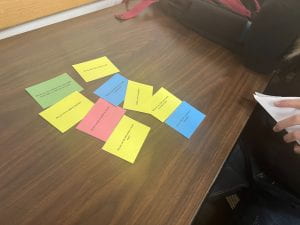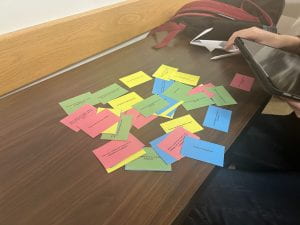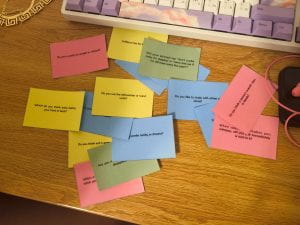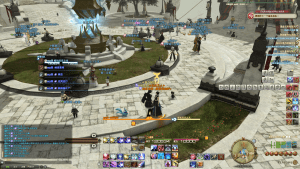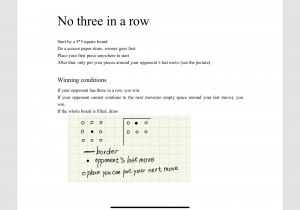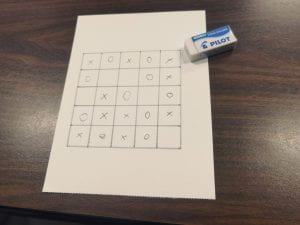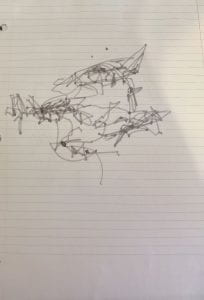The inspiration for this artwork comes from Life is Strange – this is a game full of details. In the game process, players need to make many choices, but the game has only two endings and is only related to the last option. This usually makes players doubt the significance and importance of what they do. Some people may be unhappy with this design, but I think the experience reflects the nature of life in a way.
Usually, the games that players come into contact with emphasize that “small choices can also bring great changes.” For example, in another game I like very much, Papers Please, what players do is just seal the passport of immigrants, but in the end, it can determine the life and death of many people and even the future of the country. And I want to take this opportunity to bring people an experience that violates this “hidden rule of the game.”
Process: I prepared 40 unrelated two-choice questions and printed them on paper of different colors. Before starting, I told participants that this was a test (but would not disclose the purpose), asked them to choose among these options, and could stop the process at any time. During the process, I will record their reactions (the answers to these questions are almost irrelevant, and they do not lead to a specific result) and inform the project’s purpose after the participants ask to stop or the questions are exhausted. That is: not every choice will have far-reaching consequences, and not every option has important motives behind it.
In my observation, I found that participants tend to spend time thinking and choosing the option that best suits their actual situation. When finally told the results, the participants’ reaction is usually surprised – they think I will draw a conclusion based on these illogical questions, even if they have realized that these questions are absurd. This result can reflect people’s subconscious belief that all events and choices are causal and meaningful; But in life, this is not the case.
